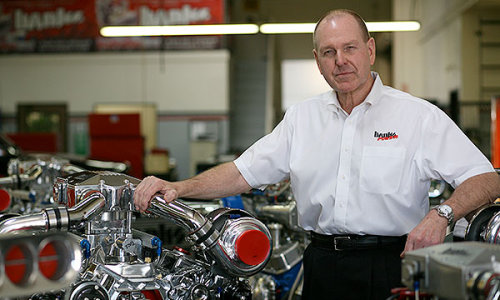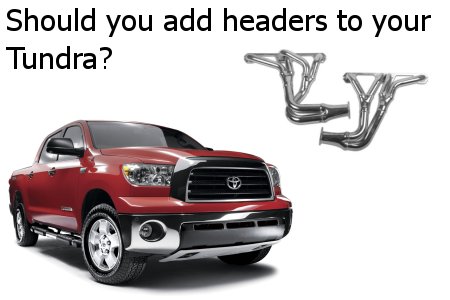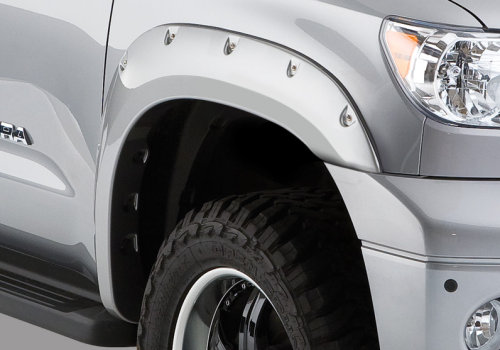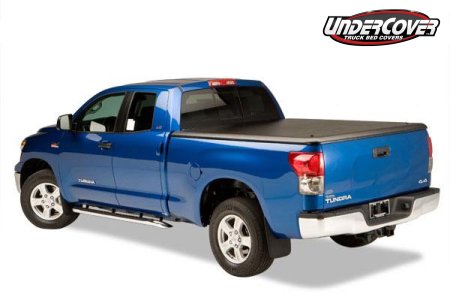 All Entries in the "Toyota Tundra Accessories" Category
All Entries in the "Toyota Tundra Accessories" Category
Bushwacker Pocket Fender Flares
If you run larger than stock tires on your pickup, then it’s likely that you’ve considered adding fender flares to your truck. Maybe it’s because fender flares are mandated by law in your area, or maybe you’re concerned about rocks and other debris getting kicked up and possibly damaging your truck’s finish on the trail, or maybe you just like the look. Whatever it is, fender flares are often a vital accessory for truck owners with aggressive offset wheels or knobby tires.
Bushwacker is a company which makes pocket style fender flares for 2007 – 2010 Toyota Tundra trucks. These flares bulge out about two inches over the top of each wheel, and then they progressively get closer to the body at each end. This helps to protect the vehicle from kicked-up debris, but not so much that the fender flares stick out too far. The pocket fender flares feature the “bolted” look that some people feel adds a degree of ruggedness to their vehicle – each pocket contains a real Torx-head screw…but the screws don’t actually do anything (they’re just for show).
Gale Banks Engineering Monster Exhaust System
There are a lot of performance companies out there hawking parts for your Toyota Tundra, but not all of them boast the kind of history that Gale Banks Engineering can claim. Headquartered in Azusa, California the man behind the company is Gale Banks himself, a legendary figure in the world of automotive performance who began setting records with his outlandish vehicles in the 1960’s. Not only did Banks compete in NHRA drag racing, but he also tackled powerboat racing and top speed titles on the Bonneville salt flats.

Motorsports icon Gale Banks
Staying at the helm of his own company longer than most other go-fast magnates of his era, Gale Banks has seen his vehicles top 275 miles per hour in street trim, while specialized record-setting models have gone as fast as 432 miles per hour on their way into the record books.
Undercover Tonneau Cover For The Tundra
Choosing a tonneau cover for your Toyota Tundra is often about compromises. Choose the least expensive tonneau cover, and you end up with a limited versatility accessory that doesn’t protect your cargo. Choose the most expensive tonneau, and you start to approach the price of a full-size topper without many of the benefits of a full-size topper/shell.
One of the best middle of the road solutions when looking for affordable and effective cargo protection is a solid, hard plastic tonneau cover. Unlike a vinyl or cloth tonneau cover, hard plastic units are lockable and extremely resistant to cutting or “smash and grab” style thefts. Hard plastic tonneuas are also waterproof, impact and stain resistant, and unlike vinyl/cloth tonneaus, they won’t start to sag after a few years of ownership. Finally, solid hard plastic tonneaus are the most secure tonneau cover option – slightly more secure than any folding tonneau covers (like Extang’s Solid Fold Tonneau).
Tundra Headers From Doug Thorley, Gibson, and JBA
Earlier this week we asked the question Should You Add Headers to your Tundra? The answer? It depends. While headers will definitely improve the performance of a bone-stock Tundra, they’re more beneficial on trucks that already have copious performance upgrades. After-market headers are performance multipliers – they’ll add at least 10 horsepower on a stock truck, but some people have gained 20 or even 30 horsepower on Tundras that have significant performance upgrades like a UniChip engine tuner or a supercharger.
Let’s take a look at three popular header choices for the Toyota Tundra and see how they stack up against each other.
Search terms people used to find this page:
- installing short headers on 2007 tundra
Should You Add Headers To Your Tundra?
When it comes to adding power to your Tundra, replacing your stock exhaust manifolds with headers is an option worth exploring. Stock exhaust manifolds are typically designed with low cost in mind, and on many vehicles they are restrictive and inefficient when compared to after-market headers. On most vehicles, replacing the stock exhaust manifold with headers will remove flow restrictions inherent in the standard system and scavenge as much exhaust gas as possible out of the engine. For most trucks (especially trucks made more than 5 years ago), headers are a great way to add decent power to a stock engine.

Tundra owners wonder - headers, or no headers?
However, fans of the 2nd-generation Tundra know that the stock exhaust manifold on the 4.6L and 5.7L Tundra is actually quite good. In fact, the stock exhaust manifold on newer Tundra trucks is one of the more sophisticated factory exhaust manifolds you’ll find. They’re an efficient stainless steel 4 into 2 into 1 design, a configuration that’s known for moving exhaust gases quickly. The Tundra’s stock exhaust manifold tubes are also equal length for each cylinder. Equal length tubes are important because they facilitate consistent back pressure in each cylinder, improving overall performance.
The bottom line for 2nd-gen Tundra owners (07′ and up models) is that replacing the standard exhaust manifold with a set of less restrictive after-market headers isn’t going to result in huge gains. Still, that’s not to say that adding headers to a Tundra will have no impact.



